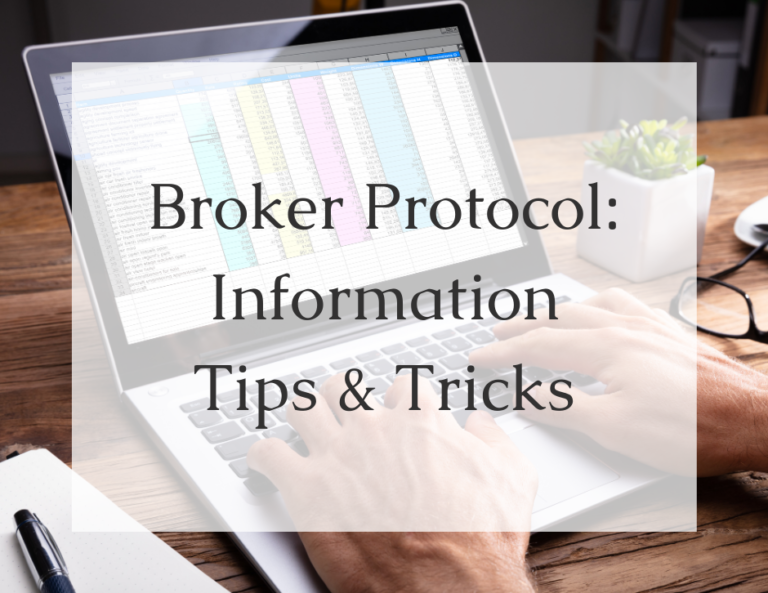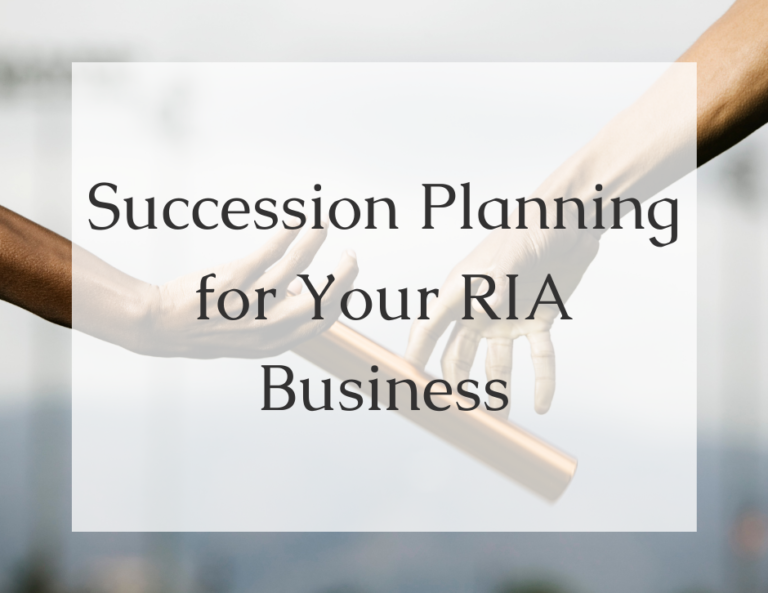
Written by: Javi Otero, Transition Consultant, Advisor Transition Services
You Started an RIA... Now What?
You’ve done it. You started an RIA. The transition is officially over – clients followed you, accounts got opened, transfers have settled, and you have a great new business venture. So… now what?
Life after the transition is when the real work begins. Your startup success hinges on how well your team adapts to new systems, nurtures client relationships, and maps out a plan for ongoing growth. This article outlines some key considerations and suggestions for ensuring that you’re not just surviving, but thriving, after the move.
1. Reintroduce Yourself to Clients in Your New Role
If you’re an advisor who started an RIA, you’re probably a business owner for the first time. You’ve been preparing and planning for months – maybe even years. On the flip side, your clients likely haven’t had much time to consider your new role – or even realize that it is a new role. Communicating post-transition can be crucial to re-establishing and maintaining trust. Consider a post-transition re-introduction agenda, including:
- Personalized “Thank You & Welcome”: Send a brief, heartfelt note to each client, acknowledging their support and thanking them for their trust.
- Clarify Service Enhancements: Highlight any improved processes, broader service offerings, upgraded tech features, or differences in team structure.
- Set Expectations for Communication: Let clients know how you’ll stay in touch – whether it’s quarterly reviews, monthly newsletters, or an annual financial plan update.
2. Optimize Your New Tech & Operational Workflows
During the transition, it’s often tough to implement new technologies and workflows that will eventually be part of the regular onboarding and service process. The focus is generally on speed, bulk processing, and asset transfers. Once the transition dust settles, workflows need to be refined (or established). Consider a post-transition implementation strategy, including:
- Onboarding Reflection & Review: Was opening new accounts more time-consuming than expected? Were CRM data imports successful? What were some of the hang-ups during the process? Now is the time to identify and smooth out the kinks.
- Train Your Team: As an RIA, your team may have a different operational landscape to learn – new compliance procedures, different custodian tools, or unfamiliar software. Schedule regular training sessions, so everyone’s on the same page and getting the education they need up front.
- Implement Automation: From appointment scheduling to report generation to email follow-ups, determine if your new tech stack offers automation options that free your team up for higher-level tasks.
3. Reassess Client Segmentation & Service Models
Ideally, you defined your target market ahead of the transition and used the process to pursue the client relationships that made the most sense for your new business. Post-transition, your book of business may look a little different. Even if every client you worked with made the move to your new firm, the services you offer and the investment strategy you employ changed. Consider initiating an updated assessment of your book, including:
- Defined Target Market: Maybe you planned to focus on high-net-worth families or entrepreneurs. Is the current client base aligned with that focus?
- Tiered Service Levels: Not every client needs a full-scale financial plan. Use post-transition momentum to clarify which segment gets which services – and the corresponding fee structure.
- Shuffle Some Clients: Just because a client remained loyal to you does not mean they’re an ideal fit for your new model. It may be time to make a referral, whether that is a junior advisor on your team, or another team altogether. Save your bandwidth for the clients who will truly benefit from the new structure.
4. Cement Your Brand Identity
Branding may not have been a major focus before, but it matters as a small business. Owning an RIA is not the same as being an advisor associated with a firm with a recognizable name that’s been around for decades. Being able to present your brand clearly and consistently is key. Consider consulting with a marketing expert on some of the most important factors, including:
- Refreshing Your Collateral: Update your business cards, social media profiles, email signatures, and marketing materials with your new logo, tagline, and color scheme.
- Own Your Story: Craft your message and practice its delivery. Why did you start an RIA? What unique value do you offer clients? Know and tell your narrative so both prospects and existing clients understand your “why.”
- Online Presence: Launch your website and tweak your LinkedIn profile to reflect your new platform, custodian, or business model. Don’t overlook the details – clients often form impressions based on digital signals.
5. Double-Down on Client Relationships
Now that you’ve gotten through the transition and determined which clients you’ll be working with going forward, focus your efforts on refreshing those relationships. Consider a strategy that emphasizes the importance of each individual, including:
- Schedule Review Meetings: A transition is a seismic shift for clients too. Hosting a check-in meeting – even if you recently spoke about the transition – lets them know they matter and gives them the opportunity to ask questions and learn about your new plans in more detail.
- Update Client Files: Gather missing documents and update notes based on clients’ new goals. Transitions generally uncover outdated information and provide the perfect opportunity to learn about changes in life circumstances (job changes, marriages, divorces, beneficiary updates, or new estate-planning needs).
- Request Referrals: A switch to a new firm that’s accompanied by new branding and opportunities is a perfect time to ask for referrals from your existing clients. Especially, if the transition went well and clients are excited. They may not even realize that you’re open to new referrals during that time, so don’t be afraid to ask.
6. Plan for the Next 6–12 Months
Transitions often happen in sprints, but a longer-term view is crucial to ensure that you can shift from a reactive to a proactive mode. Plan for the future and treat the transition as a temporary event with an end date. Consider plans that focus forward, including:
- Set Growth Goals: Whether it’s AUM growth, new client acquisition, or service expansions – outline your top priorities.
- Revisit Compliance & Operations: Check with your compliance department or third-party consultant to ensure all new accounts, advisory agreements, or marketing materials meet regulations.
- Invest in Yourself: If you’re more independent now, you might have extra freedoms – and responsibilities. Consider leadership training, additional certifications, or hiring additional team members to assist with the workload.
7. Celebrate Your Wins (Big or Small)
Transitions can be exhausting. You’ve been planning for months and then dealing with account repapering, vendor onboarding, client concerns, team training, and new expenses. It’s important to step back, consider the big picture, and make efforts to acknowledge how far you’ve come, including:
- Team Appreciation: Host a small get-together or a virtual “thank you” meeting. Recognize the effort and patience your staff contributed and bond over the big move.
- Personal Reflection: Grab a coffee (or something stronger) and make a list of the obstacles you overcame. Pat yourself on the back and boost your confidence to create momentum for the future.
- Client Gratitude: Send a personalized token of appreciation to your clients (like a handwritten note or a small gift). Reward their loyalty and let them know their patience is appreciated.
Final Thoughts: Thriving After the Move
A transition isn’t just about account transfers – it’s a catalyst. The beginning of the next chapter. Life after the transition should involve continuous improvements to your client service, marketing efforts, and operational support. The most successful advisors use the phase to reaffirm their brand, refine their process, and cultivate deeper client trust. Ultimately, it’s not about where you end up – it’s about how you grow once you’re there.
Feeling the aftershocks of a transition? Reach out to us. We’ve seen even the most seasoned advisors be caught off-guard by post-transition hiccups, and we want to help you make sure your new chapter is the best one yet.



